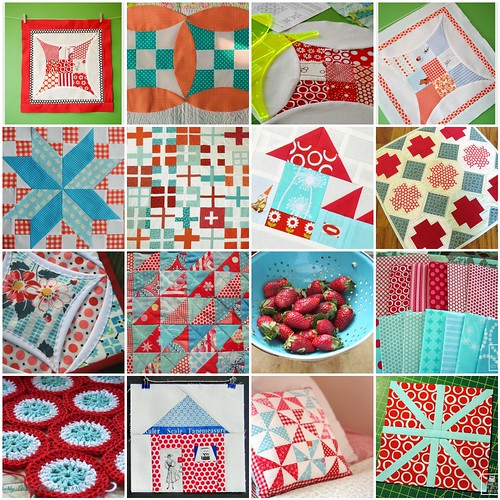This is a repost from the SHORTS ON THE LINE series.
-----------------------
Hi everyone! I'm Becky and I like to sew. I blog at Owly Baby and sell children's sewing patterns at Owly Baby.com.
-----------------------
Hi everyone! I'm Becky and I like to sew. I blog at Owly Baby and sell children's sewing patterns at Owly Baby.com.
I'm so excited to be a part of the Shorts on the Line series that I've made 3 pairs of shorts in one week! This doubles the amount of shorts in my wardrobe. A bit of selfish sewing makes me feel pampered!
In order from left to right -
The SWEET SCALLOP SHORTS from Pattern Runway on Etsy (for sale HERE).
My very wearable (4 days in a row!) turquoise tester/muslin cuffed shorts. (self drafted pattern)
My super stylish leopard cuffed shorts. (self drafted pattern, FREE pattern link below)
SWEET SCALLOP SHORTS (pattern: Pattern Runway)
The fit was great on the Sweet Scallop shorts from Pattern Runway. The instructions were very clear and included tips on fitting and choosing the right size. The cutting and sewing diagrams were very helpful and I learned how to sew a single welt pocket. These shorts would be great for a motivated beginner or intermediate sewer.
 I didn't think the welt pockets would go well with the casual look I was going for, so I did make a few adjustments. I didn't apply any pockets to the backside, I shortened the overall length 1" and added the scallop shape to the back of the shorts. I redrafted the back hem facing and added a drawstring waist instead of a side seam invisible zip.
I didn't think the welt pockets would go well with the casual look I was going for, so I did make a few adjustments. I didn't apply any pockets to the backside, I shortened the overall length 1" and added the scallop shape to the back of the shorts. I redrafted the back hem facing and added a drawstring waist instead of a side seam invisible zip.  |
| scallops hem on back |
I love the scallop shape at the hem and even though they are drawstring shorts (and feel like jammies), they still feel nice enough to wear out for errands and playdates. I do have to wiggle a little to get them over my hips, and in hindsight I should have added .25" on each side seam because I did remove the side zipper, but it hasn't overly strained any of the seamlines yet.
 |
| The fabric is a Lisette Twill from JoAnn's. |
CUFFED SHORTS - FREE PATTERN from Owly Baby
Now, on to the turquoise testers and fancy leopard shorts. Lucky readers, you also get to join in the sewing shorts fun. I'm sharing my pattern with you for FREE! It will fit anyone who wears a Ready-to-Wear size 4 (store sizing). For reference, it should fit a 29" waist, 37" hip. It is a self drafted pattern that is not entirely perfect - I've only used twice, but I have been wearing my shorts non-stop! They fit great on me, so if you're around the same size - I hope they will work for you.
 |
| First zipper and belt loops! |
 | ||
| The center back seam has been modified - shallower curve. The back legs will also "hug" closer to legs than shown in this muslin. |
I've also written up some instructions for you to follow that include helpful links on how to sew single and double welt pockets, AND how to sew a fly zipper. This was my first time sewing using a fly front zipper AND a welt pocket (and belt loops!). If I can do it, you can too! Click below for the FREE PATTERN and instructions.
FREE Cuffed Shorts Pattern Pieces (Size 4 RTW)
This pattern is for personal use only.
Copyright Rebecca Ruud, 2012. All Rights Reserved.
This pattern is for personal use only.
Copyright Rebecca Ruud, 2012. All Rights Reserved.
This leopard fabric has definite stretch, refuses to be ironed and snags easily.
It was horrible to work with but it feels wonderful to wear!
In short (pun intended): I've been wearing my three new pairs of shorts non-stop! They were totally worth the effort and I loved learning how to put in the fly zipper. I am now putting in fly zippers in EVERYTHING!
I hope you're inspired to join the Shorts on the Line Sewalong and win some fabulous prizes!
Happy sewing and shorts-wearing!
VERY Helpful links:
Adding a fly zipper: http://www.threadsmagazine.com/item/3831/video-an-easy-flat-fly-front-zipper
Sewing single welt pocket:http://fashion-incubator.com/archive/how-to-sew-a-single-welt-pocket/
Sewing double welt pocket: http://fashion-incubator.com/archive/welt_pocket_construction/


































